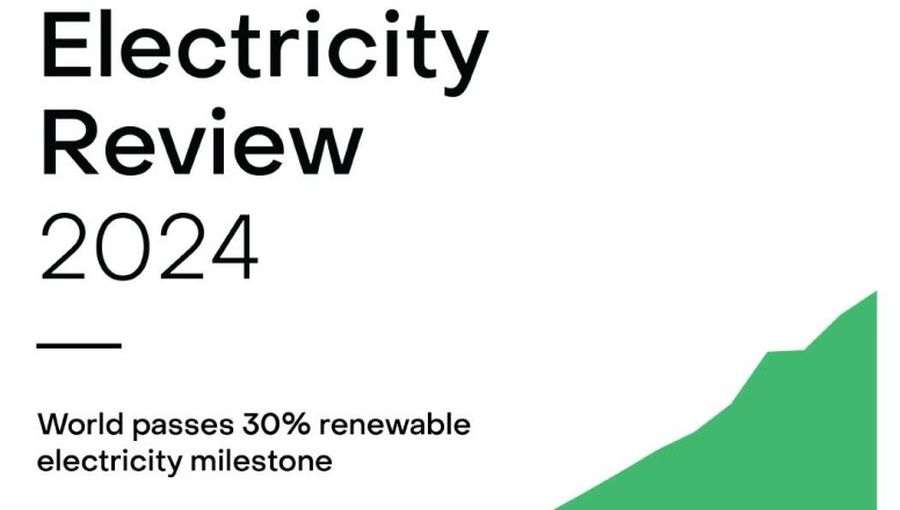The *Global Electricity Review 2024* by Ember provides a comprehensive analysis of global electricity generation trends in 2023, highlighting a significant shift toward renewable energy. Renewables reached a record 30% of global electricity production, driven by rapid growth in solar and wind, which together accounted for 13.4% of the global electricity mix, up from 0.2% in 2000. Solar led as the fastest-growing source for the 19th consecutive year, contributing more than twice as much new electricity as coal, with China, the EU, the US, and Brazil driving 81% of solar growth. Combined with nuclear, low-carbon sources provided nearly 40% of global electricity, reducing the CO2 intensity of power generation to a record low, 12% below its 2007 peak. However, a shortfall in hydropower due to droughts led to a slight increase in fossil fuel use, particularly coal, causing power sector emissions to hit a new high.
Despite this, 2023 is identified as a pivotal year, likely marking the peak of power sector emissions, with forecasts suggesting a decline in fossil generation starting in 2024 due to continued renewable expansion. The report emphasizes that the ongoing energy transition, led by solar and wind, is poised to outpace electricity demand growth in the coming decade, supporting global decarbonization goals. Countries like China, which contributed 58% of new global solar and 60% of new wind generation, exemplify rapid progress, while others, such as Saudi Arabia and Uzbekistan, lag with heavy fossil fuel reliance. The report underscores the urgency of accelerating clean energy deployment to meet international climate targets, including decarbonizing the power sector by 2035 in OECD countries and 2045 globally, which is critical for reducing the sector’s significant share of energy-related CO2 emissions and enabling electrification across transport, heating, and industry.

